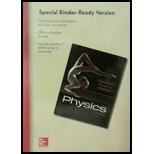
Concept explainers
(a)
Whether the blocks are necessarily in physical contact.
(a)
Answer to Problem 122P
No, the blocks need not necessarily be in physical contact with each other.
Explanation of Solution
For the two blocks to be in thermal contact, the blocks need not touch each other. They can transfer heat by
(b)
Whether the blocks will have the same internal energy if the temperatures of the blocks are same.
(b)
Answer to Problem 122P
The blocks should have the same mass to have the same internal energy.
Explanation of Solution
The blocks are made up of the same material, aluminum. They have the same internal energy and the material of both blocks are the same. But for the internal energy of the blocks to become same, the blocks should have the same mass. This is the necessary condition for the internal energy of the blocks to be same. Therefore, the blocks should have the same mass to have the same internal energy.
(c)
Whether there is a net energy transfer between the blocks if their internal energies are not equal.
(c)
Answer to Problem 122P
No, there is not net transfer of energy even though their internal energies are not equal.
Explanation of Solution
Energy transfer is associated with difference in temperature. The blocks are kept at the same temperatures. There is no difference in the temperature which does not owe to the transfer of heat energy. Therefore, there is not net transfer of energy even though their internal energies are not equal.
(d)
The final equilibrium temperature and the change in internal energy of cold and hot block.
(d)
Answer to Problem 122P
The final equilibrium temperature and the change in internal energy of cold and hot block are
Explanation of Solution
Write the expression of the total transfer associated with the blocks.
Write the expression for the heat associated with the cold block.
Here,
Write the expression for the heat associated with the hot block.
Here,
Conclusion:
Substitute
Substitute
Substitute
Substitute
Therefore, the final equilibrium temperature and the change in internal energy of cold and hot block are
Want to see more full solutions like this?
Chapter 14 Solutions
Loose Leaf Version For Physics
 College PhysicsPhysicsISBN:9781305952300Author:Raymond A. Serway, Chris VuillePublisher:Cengage Learning
College PhysicsPhysicsISBN:9781305952300Author:Raymond A. Serway, Chris VuillePublisher:Cengage Learning University Physics (14th Edition)PhysicsISBN:9780133969290Author:Hugh D. Young, Roger A. FreedmanPublisher:PEARSON
University Physics (14th Edition)PhysicsISBN:9780133969290Author:Hugh D. Young, Roger A. FreedmanPublisher:PEARSON Introduction To Quantum MechanicsPhysicsISBN:9781107189638Author:Griffiths, David J., Schroeter, Darrell F.Publisher:Cambridge University Press
Introduction To Quantum MechanicsPhysicsISBN:9781107189638Author:Griffiths, David J., Schroeter, Darrell F.Publisher:Cambridge University Press Physics for Scientists and EngineersPhysicsISBN:9781337553278Author:Raymond A. Serway, John W. JewettPublisher:Cengage Learning
Physics for Scientists and EngineersPhysicsISBN:9781337553278Author:Raymond A. Serway, John W. JewettPublisher:Cengage Learning Lecture- Tutorials for Introductory AstronomyPhysicsISBN:9780321820464Author:Edward E. Prather, Tim P. Slater, Jeff P. Adams, Gina BrissendenPublisher:Addison-Wesley
Lecture- Tutorials for Introductory AstronomyPhysicsISBN:9780321820464Author:Edward E. Prather, Tim P. Slater, Jeff P. Adams, Gina BrissendenPublisher:Addison-Wesley College Physics: A Strategic Approach (4th Editio...PhysicsISBN:9780134609034Author:Randall D. Knight (Professor Emeritus), Brian Jones, Stuart FieldPublisher:PEARSON
College Physics: A Strategic Approach (4th Editio...PhysicsISBN:9780134609034Author:Randall D. Knight (Professor Emeritus), Brian Jones, Stuart FieldPublisher:PEARSON





